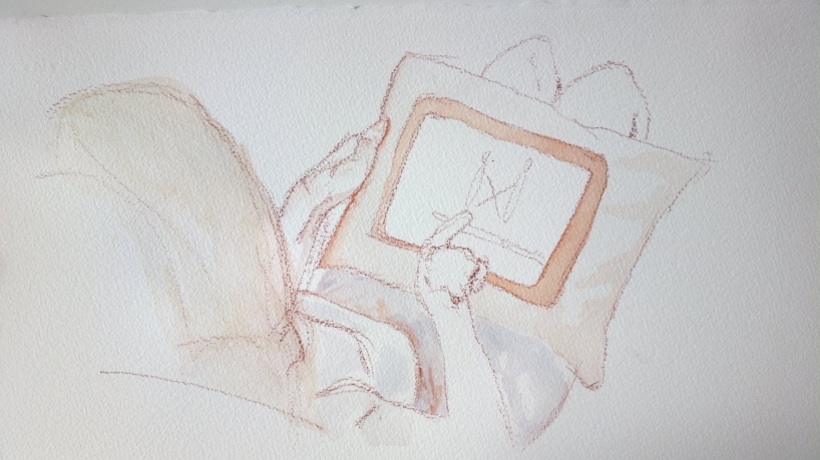Artistic Lines In Digital Communication Can Lead To Better eLearning Design
When developing an eLearning course we look for efficiency, usefulness, good content and captivating graphics. We try to promote dialogues between learners and any form of digital interaction to reduce the physical isolation often present during the use of elearning products or elearning services.
The Role of Graphics in eLearning Design Development
eLearning graphics created with a computer is in some way pre-defined in its structure. It has to be thought, it passes through a rational mind and the computer is able to draw perfectly, straight lines and uniform colors. However, this kind of pre-determined perfection is hardly something we can relate to as nature makes of its “imperfections” one of its core strengths, because they allow room for diversity and even unexpected experimentations. So we are used to operate in non-perfect worlds and we like it, if feels in fact...natural. That's why, an architect once told me, most of us prefer ancient or old buildings: they have hardly a sharp straight line in it. We perceive non-straight lines to be less intimidating.
eLearning designers look for ways to create welcoming online learning environments so that learners can experience that eLearning product or eLearning service, in a setting they enjoy spending time in, where they feel comfortable and possibly where their visionary functions are stimulated in an engaging and productive way.
I have always been someone sensitive to light and aesthetics so I realized that a sign, especially a hand-draw one, perhaps colored with natural pigments, can touch the learner’s eyes or let's poetically say, their heart, in a different, perhaps warmer way than its digital counterpart. This is because, unexpected imperfections, like those in our natural world, allow a relation/communication with a learner, whereas digital perfection, can be slightly authoritative in its message, reducing the learner’s role in the communication process.
Although even artistic signs have their own peculiar language, artistic traits tend to be cross-cultural in the emotion and engagement they inspire in every human being who looks at and interacts with them. In their essence, they require a viewer to interact with them, because they need an observer to investigate them.
Precisely because of this quality of engaging with the learner, they touch the memory and ask a learner to make inferences about them or simply enjoy them aesthetically, but even in this case, there is always a truly interactive communication, which goes beyond race, age, social class and language. In an article appeared on BBC Wildlife called The art of nature, a mathematician, Jules Henri Poincaré is quoted saying:
"The scientist does not study nature because it is useful, he studies it because he delights in it, and he delights in it because it is beautiful. If nature were not beautiful, it would not be worth knowing and if nature were not worth knowing, life would not be worth living..." the article's author continues noting that "many pioneering scientists were gifted artists as well as revolutionary thinkers"..."our emotions are awakened by simple shapes of lines and the angles at which they meet." "There is no real divide between science and art: science is simply an art of studying natural phenomena and art is the science of giving expression to the creations or interpretations of our minds. The scientists who fail to see the aesthetics in their science and the artists who fail to perceive the mathematical form in their subjects will always fall short in their respective interpretations of nature's design."
Last but not least, you may find valuable the following three videos where artistic drawings were used:
- Clickers: engage your students in a whole new way
- Webcast studio: the easy way to get lectures on the internet
- Blackboard: e-learning system that has it all
Artistic drawings can be powerful tools of research and generally speaking of digital communication and could provide a way for eLearning design to become more natural, imperfect, open to possibilities and therefore closer to our natural environment, the one we like spending time in.

